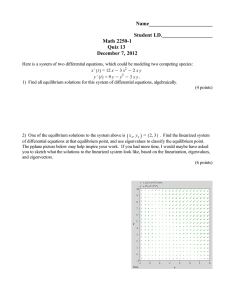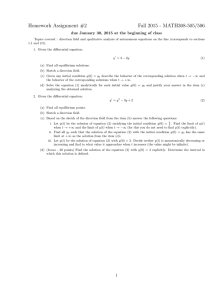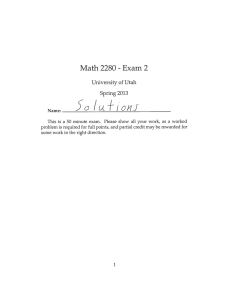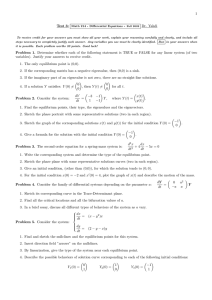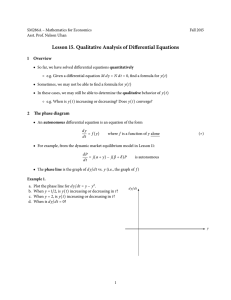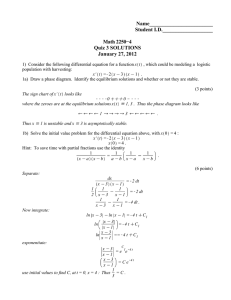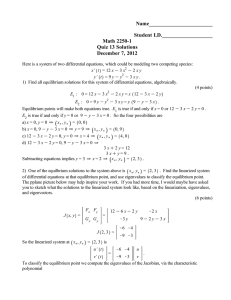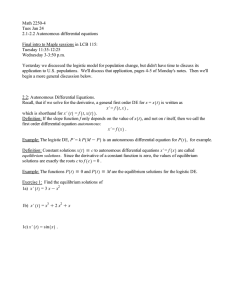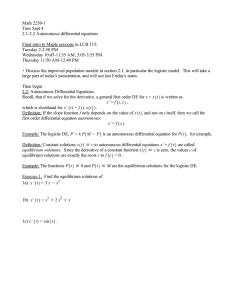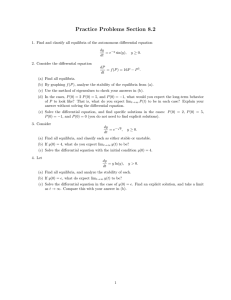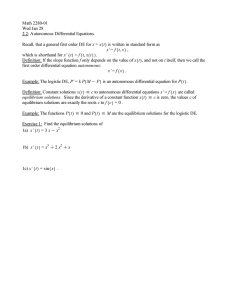NAME: MATH 1180 Midterm I
advertisement
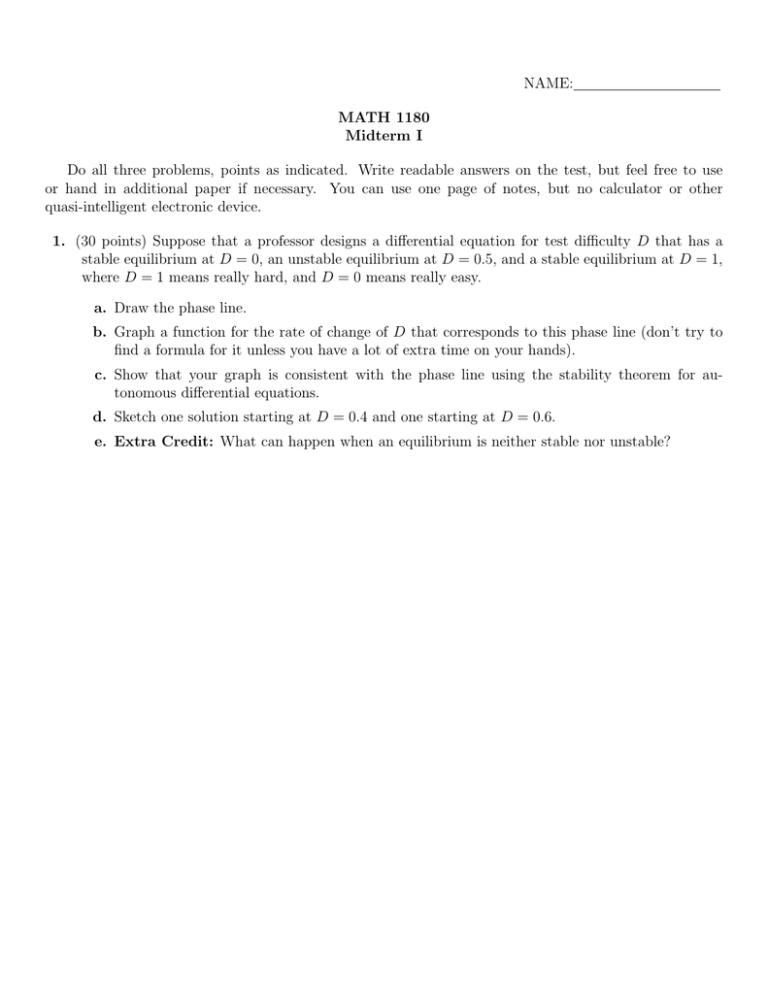
NAME: MATH 1180 Midterm I Do all three problems, points as indicated. Write readable answers on the test, but feel free to use or hand in additional paper if necessary. You can use one page of notes, but no calculator or other quasi-intelligent electronic device. 1. (30 points) Suppose that a professor designs a differential equation for test difficulty D that has a stable equilibrium at D = 0, an unstable equilibrium at D = 0.5, and a stable equilibrium at D = 1, where D = 1 means really hard, and D = 0 means really easy. a. Draw the phase line. b. Graph a function for the rate of change of D that corresponds to this phase line (don’t try to find a formula for it unless you have a lot of extra time on your hands). c. Show that your graph is consistent with the phase line using the stability theorem for autonomous differential equations. d. Sketch one solution starting at D = 0.4 and one starting at D = 0.6. e. Extra Credit: What can happen when an equilibrium is neither stable nor unstable? 2. (30 points) In a different class, the difficulty of tests D obeys the differential equation dD = −αD2 dt Suppose D(0) = 1.0, α = 0.1, and that time is measured in weeks. a. Describe what is happening in words. Are tests becoming more or less difficult with time? b. Use Euler’s method with a step size of ∆t = 1 to estimate the difficulty of tests at t = 1. c. Separate variables (place all the D’s on the left-hand side and the t’s on the right). d. Finish using the method of separation of variables to solve the equation. e. Find the constant using the initial condition. f. How would you include a term that makes tests a little more difficult over time? g. Extra Credit: Write a differential equation for how you would like test difficulty to change. 3. (40 points) Suppose the difficulty D of tests is connected to the anxiety A of students with the differential equations dD (D − 1)2 = 1− dt A dA = D − A. dt Assume that D ≥ 0 and A ≥ 0. a. Draw the phase plane. b. Add the nullclines. c. Indicate the equilibrium or equilibria on your graph (you don’t have to find them algebraically). d. Add the direction arrows. e. Sketch a solution that starts at D = 1 and A = 1. f. Extra Credit: Estimate the current values of D and A in this class. π. (Extra credit) Compose a haiku that expresses your feelings about calculus

